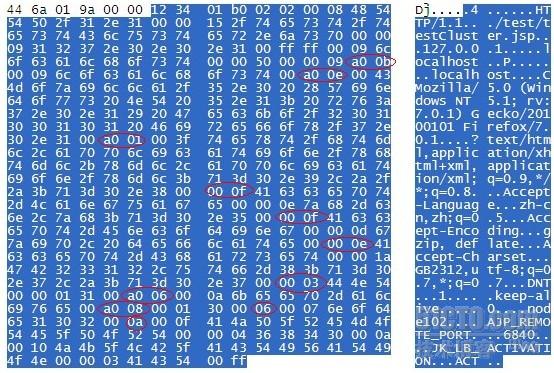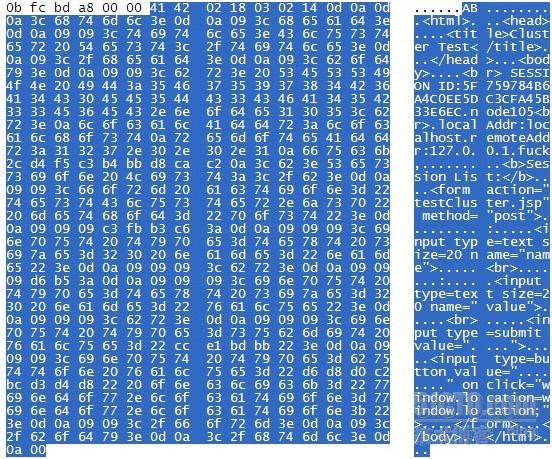Tomcat服务器通过Connector连接器组件与客户程序建立连接,Connector组件负责接收客户的请求,以及把Tomcat服务器的响应结果发送给客户。默认情况下,Tomcat在server.xml中配置了两种连接器:
<!-- Define a non-SSL Coyote HTTP/1.1
Connector on port 8080 -->
<Connector port="8080"
maxThreads="150"
minSpareThreads="25"
maxSpareThreads="75"
enableLookups="false"
redirectPort="8443"
acceptCount="100"
debug="0"
connectionTimeout="20000"
disableUploadTimeout="true" />
<!-- Define a Coyote/JK2 AJP 1.3
Connector on port 8009 -->
<Connector port="8009"
enableLookups="false"
redirectPort="8443" debug="0"
protocol="AJP/1.3" />
第一个连接器监听8080端口,负责建立HTTP连接。在通过浏览器访问Tomcat服务器的Web应用时,使用的就是这个
http://blog.sina.com.cn/s/blog_6870d1e00100mv64.html
一般Tomcat默认的SSL端口号是8443,但是对于SSL标准端口号是443,这样在访问网页的时候,直接使用https而不需要输入端口号就可以访问,如https://ip/
想要修改端口号,需要修改Tomcat的server.xml文件:
1.non-SSL HTTP/1.1 Connector定义的地方,一般如下:
<Connector port="80" maxHttpHeaderSize="8192"
maxThreads="500" minSpareThreads="25" maxSpareThreads="75"
enableLookups="false" redirectPort="443" acceptCount="100"
connectionTimeout="20000" disableUploadTimeout="true" />
将其中的redirectPort端口号改为:443
2.SSL HTTP/1.1 Connector定义的地方,修改端口号为:443,如下:
<Connector
port="443" maxHttpHeaderSize="8192"
maxThreads="150" minSpareThreads="25"
maxSpareThreads="75"
enableLookups="false"
disableUploadTimeout="true"
acceptCount="100" scheme="https"
secure="true"
clientAuth="false" sslProtocol="TLS"
keystoreFile="conf/tomcat.keystore"
keystorePass="123456" />
3.AJP 1.3 Connector定义的地方,修改redirectPort为443,如下:
<Connector port="8009"
enableLookups="false" redirectPort="443" protocol="AJP/1.3" />
重新启动Tomcat就可以了。到这一步可以形成访问方式 https://ip/
4、强制https访问
在tomcat\conf\web.xml中的</welcome-file-list>后面加上这样一段:
<login-config>
<!-- Authorization setting for SSL -->
<auth-method>CLIENT-CERT</auth-method>
<realm-name>Client Cert Users-only Area</realm-name>
</login-config>
<security-constraint>
<!-- Authorization setting for SSL -->
<web-resource-collection >
<web-resource-name >SSL</web-resource-name>
<url-pattern>/*</url-pattern>
</web-resource-collection>
<user-data-constraint>
<transport-guarantee>CONFIDENTIAL</transport-guarantee>
</user-data-constraint>
</security-constraint>
注意:(如果对方使用的机器端口被占用)
需要切换端口来转换数据:iptables -t nat -A PREROUTING -p tcp --dport 80 -j REDIRECT --to-port 8080
AJP(Apache JServ Protocol)是定向包协议。因为性能原因,使用二进制格式来传输可读性文本。WEB服务器通过TCP连接和SERVLET容器连接。
(格式显示不好,本文已放附件中)
AJP协议是定向包(面向包)协议,采用二进制形式代替文本形式,以提高性能。Web Server一般维持和Web Container的多个TCP Connecions,即TCP连接池,多个request/respons循环重用同一个Connection。但是当Connection被分配(Assigned)到某个请求时,该请求完成之前,其他请求不得使用该连接。
Tcp Connection 具有两种状态:
Boolean: 一个字节,1 = true, 0 = false。
|
包方向
|
0
|
1
|
2
|
3
|
4…(n+3)
|
|
Server->Container
|
0x12
|
0x34
|
数据长度(n)
|
数据(payload)
|
|
|
Container->Server
|
A
|
B
|
数据长度(n)
|
数据(payload)
|
|
|
方向
|
code
|
包类型
|
描述
|
|
Server->Container
|
2
|
Forward Request |
Begin the request-processing cycle with the following data。 |
|
7
|
Shutdown
|
The web server asks the container to shut itself down |
|
|
8
|
Ping
|
The web server asks the container to take control (secure login phase). |
|
|
10
|
Cping
|
The web server asks the container to respond quickly with a CPong |
|
|
none
|
Data
|
Size (2 bytes) and corresponding body data. |
|
|
Container->Server
|
3
|
Send Body Chunk
|
Send a chunk of the body from the servlet container to the web server |
|
4
|
Send Headers
|
Send the response headers from the servlet container to the web server |
|
|
5
|
End Response
|
Marks the end of the response
|
|
|
6
|
Get Body Chunk
|
Get further data from the request if it hasn't all been transferred yet |
|
|
9
|
CPong Reply
|
The reply to a CPing request
|
|
AJP13_FORWARD_REQUEST :=
prefix_code (byte) 0x02 = JK_AJP13_FORWARD_REQUEST
method (byte)
protocol (string)
req_uri (string)
remote_addr (string)
remote_host (string)
server_name (string)
server_port (integer)
is_ssl (boolean)
num_headers (integer)
request_headers *(req_header_name req_header_value) attributes *(attribut_name attribute_value)
request_terminator (byte) OxFF |
|
req_header_name :=
sc_req_header_name | (string) [see below for how this is parsed] |
|
sc_req_header_name := 0xA0xx (integer) req_header_value := (string)
|
|
attribute_name := sc_a_name | (sc_a_req_attribute string) attribute_value := (string)
|
(1) prefix_code 所有的Forward Request包都是0x02.
|
Command Name |
code
|
POST
|
4
|
|
OPTIONS
|
1
|
PUT
|
5
|
|
GET
|
2
|
DELETE
|
6
|
|
HEAD
|
3
|
TRACE
|
7
|
(3) protocol, req_uri, remote_addr, remote_host, server_name, server_port, is_ssl: 每个请求包都有这几个字段,格式都是 长度+字符串值+\0结束符。
|
请求头
|
Code 值 |
Code 名称 |
|
accept |
SC_REQ_ACCEPT
|
|
|
accept-charset
|
0xA002
|
SC_REQ_ACCEPT_CHARSET
|
|
accept-encoding
|
0xA003
|
SC_REQ_ACCEPT_ENCODING
|
|
accept-language
|
0xA004
|
SC_REQ_ACCEPT_LANGUAGE
|
|
authorization
|
0xA005
|
SC_REQ_AUTHORIZATION
|
|
connection
|
0xA006
|
SC_REQ_CONNECTION
|
|
content-type
|
0xA007
|
SC_REQ_CONTENT_TYPE
|
|
content-length
|
0xA008
|
SC_REQ_CONTENT_LENGTH
|
|
cookie
|
0xA009
|
SC_REQ_COOKIE
|
|
cookie2
|
0xA00A
|
SC_REQ_COOKIE2
|
|
host
|
0xA00B
|
SC_REQ_HOST 0xA00C |
|
pragma
|
0xA00C
|
SC_REQ_PRAGMA
|
|
referer
|
0xA00D
|
SC_REQ_REFERER
|
|
user-agent
|
0xA00E
|
SC_REQ_USER_AGENT
|
|
AJP13_SEND_HEADERS :=
prefix_code 4
http_status_code (integer)
http_status_msg (string)
num_headers (integer)
response_headers *(res_header_name header_value) res_header_name :=
sc_res_header_name | (string) [see below for how this is parsed]
sc_res_header_name := 0xA0 (byte) header_value := (string)
AJP13_SEND_BODY_CHUNK :=
prefix_code 3
chunk_length (integer)
chunk *(byte) AJP13_END_RESPONSE :=
prefix_code 5
reuse (boolean)
AJP13_GET_BODY_CHUNK :=
prefix_code 6
requested_length (integer)
|
|
请求头
|
Code 值 |
Code 名称 |
|
Content-Type
|
0xA001
|
SC_RESP_CONTENT_TYPE
|
|
Content-Language
|
0xA002
|
SC_RESP_CONTENT_LANGUAGE
|
|
Content-Length
|
0xA003
|
SC_RESP_CONTENT_LENGTH
|
|
Date
|
0xA004
|
SC_RESP_DATE
|
|
Last-Modified
|
0xA005
|
SC_RESP_LAST_MODIFIED
|
|
Location
|
0xA006
|
SC_RESP_LOCATION
|
|
Set-Cookie
|
0xA007
|
SC_RESP_SET_COOKIE
|
|
Set-Cookie2
|
0xA008
|
SC_RESP_SET_COOKIE2
|
|
Servlet-Engine
|
0xA009
|
SC_RESP_SERVLET_ENGINE
|
|
Status
|
0xA00A
|
SC_RESP_STATUS
|
|
WWW-Authenticate
|
0xA00B
|
SC_RESP_WWW_AUTHENTICATE
|
响应头数据包:
响应正文数据包:
http://guojuanjun.blog.51cto.com/277646/688559/
来源:https://www.cnblogs.com/softidea/p/5735102.html



